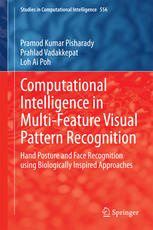

Most ebook files are in PDF format, so you can easily read them using various software such as Foxit Reader or directly on the Google Chrome browser.
Some ebook files are released by publishers in other formats such as .awz, .mobi, .epub, .fb2, etc. You may need to install specific software to read these formats on mobile/PC, such as Calibre.
Please read the tutorial at this link: https://ebookbell.com/faq
We offer FREE conversion to the popular formats you request; however, this may take some time. Therefore, right after payment, please email us, and we will try to provide the service as quickly as possible.
For some exceptional file formats or broken links (if any), please refrain from opening any disputes. Instead, email us first, and we will try to assist within a maximum of 6 hours.
EbookBell Team

4.4
72 reviewsThis book presents a collection of computational intelligence algorithms that addresses issues in visual pattern recognition such as high computational complexity, abundance of pattern features, sensitivity to size and shape variations and poor performance against complex backgrounds. The book has 3 parts. Part 1 describes various research issues in the field with a survey of the related literature. Part 2 presents computational intelligence based algorithms for feature selection and classification. The algorithms are discriminative and fast. The main application area considered is hand posture recognition. The book also discusses utility of these algorithms in other visual as well as non-visual pattern recognition tasks including face recognition, general object recognition and cancer / tumor classification. Part 3 presents biologically inspired algorithms for feature extraction. The visual cortex model based features discussed have invariance with respect to appearance and size of the hand, and provide good inter class discrimination. A Bayesian model of visual attention is described which is effective in handling complex background problem in hand posture recognition.
The book provides qualitative and quantitative performance comparisons for the algorithms outlined, with other standard methods in machine learning and computer vision. The book is self-contained with several figures, charts, tables and equations helping the reader to understand the material presented without instruction.